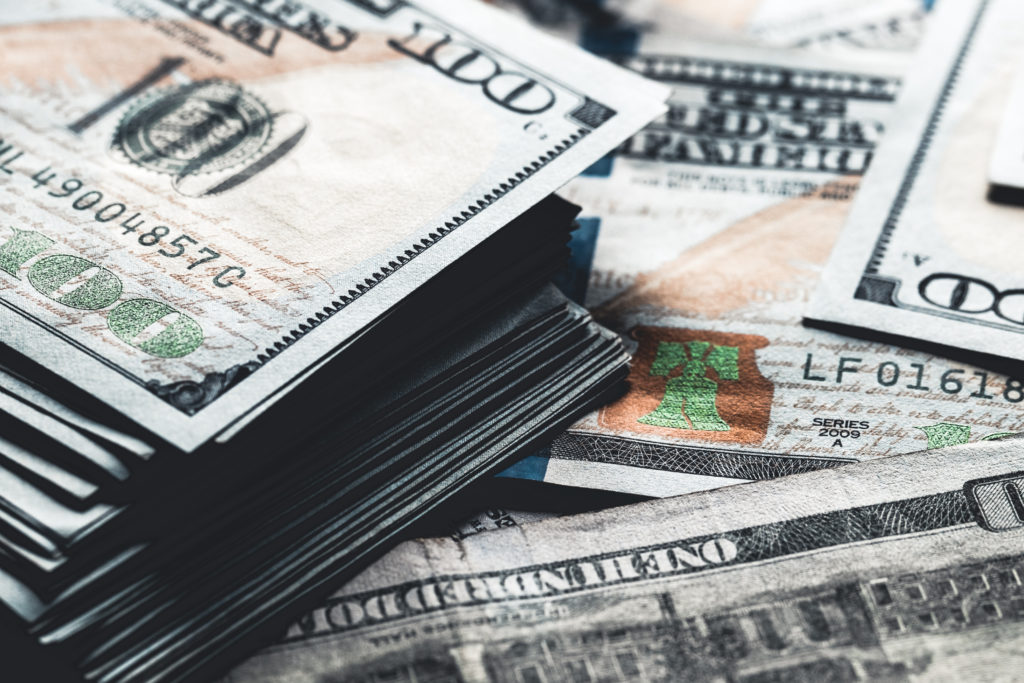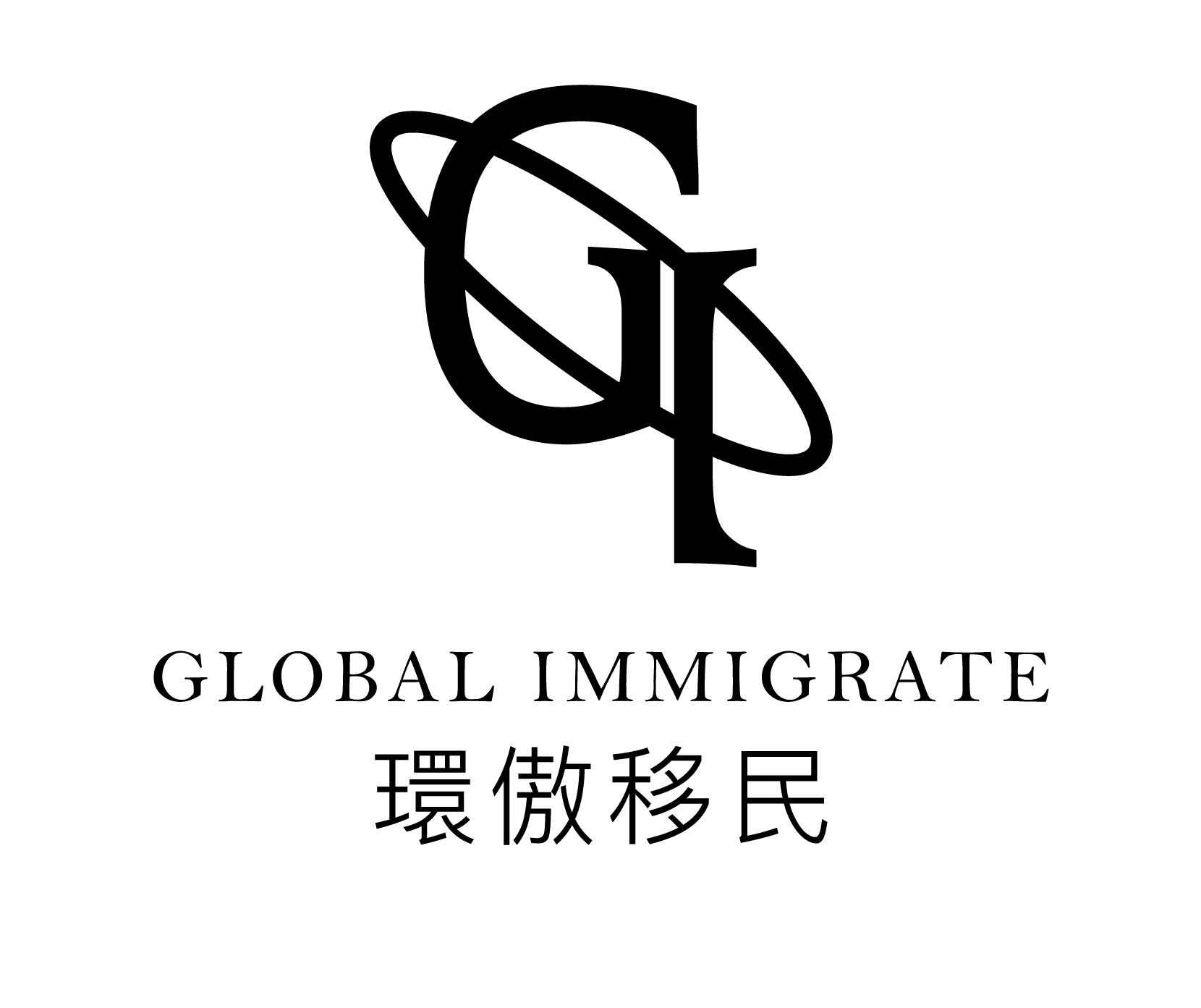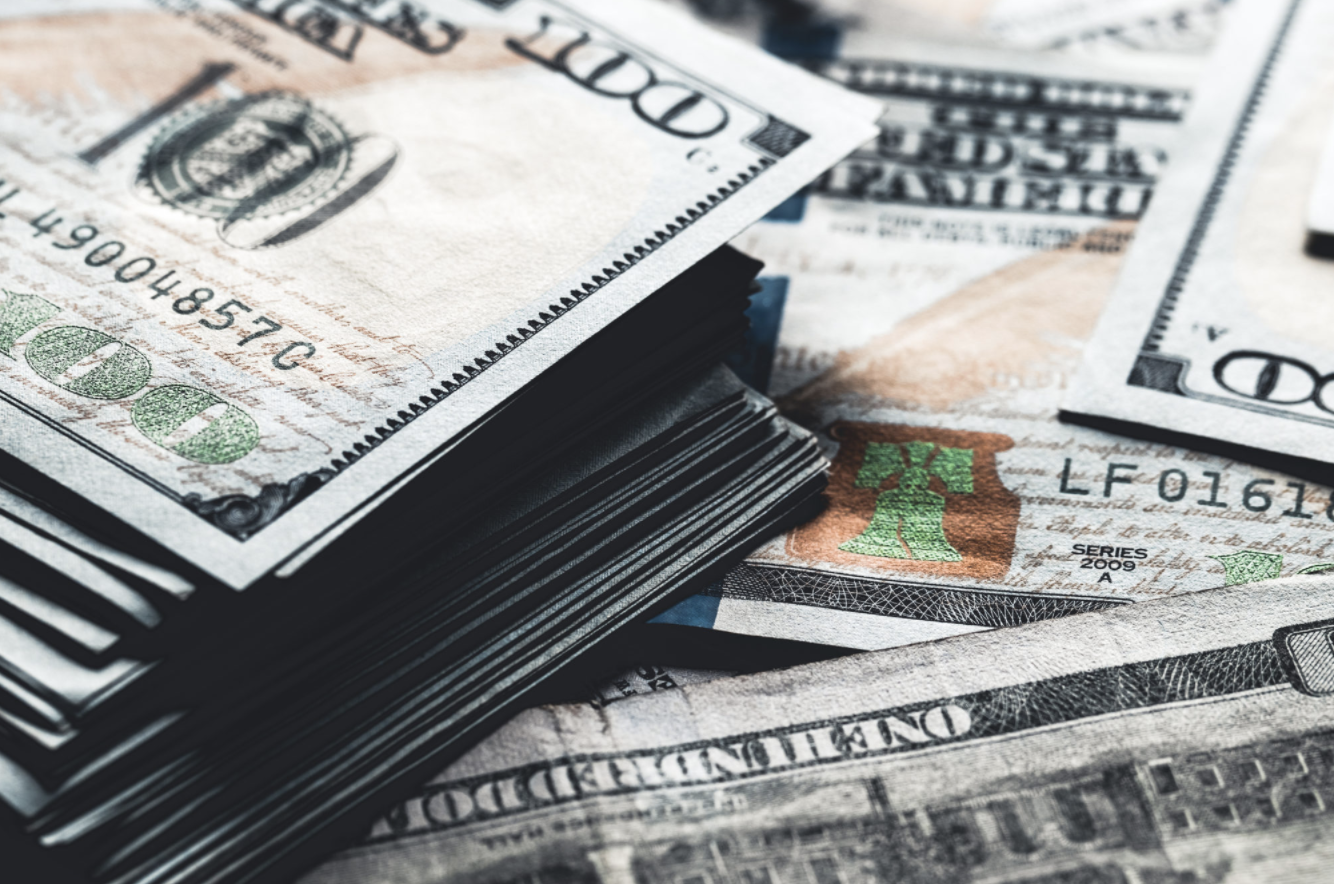Are you thinking about life in the United States? Whether it is to work in the United States, study abroad, settle down or pursue a dream, one of the indispensable preparations is to need a local bank account.
Many people say that opening a bank account in the United States is not an easy task, mainly because of strict local regulations to prevent money laundering. However, as long as you are willing to pay a little time and patience, you can still apply successfully. The following will provide information on opening an account with Bank of America and recommend more favorable remittance strategies.

Can a foreigner open an account in a U.S. bank?
Foreigners only need to meet the requirements of U.S. banks to open an account with U.S. banks, including providing valid identification documents and address proof, as well as depositing a minimum deposit.
Documents required for bank account opening
Many netizens have tried to successfully open an account with different file combinations. This article will provide a more comprehensive account opening file preparation lazy package.
In terms of providing identification documents, generally, the supporting documents required by banks are as follows:
- Passport
- Second certificate (prepare one of the following)
- National ID card (for example Hong Kong ID card)
- Home country driver’s license (some banks will accept)
- American student ID (if applicable)
- U.S. company employee certificate (if applicable)
- Immigration certificate (if applicable)
- Social Security Number SSN (required by some banks)
In terms of providing address proof documents, the proof documents generally required by banks are as follows:
- Proof of home country address (required by some banks) (prepare one of the following)
- Bank monthly statement (you can ask the bank to handle it in English)
- Taxpayer identification number ITIN approval letter (the letter sent to Hong Kong will show the Hong Kong address)
- Proof of US address (required by most banks) (prepare one of the following)
- Recent utility bills (gas, electricity, water or fixed-line telephone)
- Lease
- Recent credit card or bank statement
- Taxpayer identification number ITIN (some banks will accept)
As always, the best case is to provide the above-mentioned documents, but if you have just arrived in the United States or are planning to travel to the United States, you may not be able to provide the relevant address proof. But don’t be discouraged, there are some methods you can refer to:
If you are going to study in the United States, you can try to seek assistance from the institution where you are enrolled, and provide a confirmation letter about your residential address. Many banks will accept it.
If you are going to work in the United States, please note that the bank may not accept the employer letter as proof of address. In this case, many successful cases will first go to the bank in Chinatown to ask them what other documents can be used as proof of address.
As long as you successfully open your first U.S. account, if you need to open an additional bank account, you only need to use the bank statement as proof of address after the period, which is very convenient.
Bank of America account opening process
- Online or branch appointment time (you can also queue up directly at the branch)
- Prepare the required documents and go to the branch to go through the formalities
- Fill in the application form required by the bank (including the W8BEN form)
- Account opening deposit (the amount depends on the bank, cash or cheque can be used)
- Complete application
- The bank card and password letter will be sent separately
Can I open a bank account before arriving in the United States?
The answer is yes. If your main correspondent bank has a U.S. bank branch, as long as the bank meets the relevant requirements, they can open an overseas account / global account for you, which is exactly in line with the needs of non-U.S. residents. In the absence of valid address proof, it is definitely a good choice. Currently, HSBC and Citibank both provide global accounts.
How to send money to the U.S.?
The following table compares the cost of sending USD 1,000 online to a U.S. bank account through different channels:
| Money Transfer | Merchant Handling Fee | Exchange Rate* | Payment Amount |
 |
HK$50 + overseas bank charges ¹ | 1 USD = 7.80010 HKD ² | HK$7,850.1 + overseas bank charges |
 |
HK$65 + overseas bank charges ³ | 1 USD = 7.78500 HKD ⁴ | HK$7,850 + overseas bank charges |
 |
HK$65 + overseas bank charges ⁵ | 1 USD = 7.78425 HKD ⁶ | HK$7,849.25 + overseas bank charges |
Generally speaking, it is recommended to remit money through online banking, as the handling fee is relatively cheaper than that of branches. Want to save more? You can consider using TransferWise’s online remittance service, which only requires a small fee, and you can complete the remittance at the market exchange rate found by Google. In the above example, the total cost difference between using TransferWise and using a bank to transfer 1,000 US dollars can be as high as HK$36.83-HK$37.68.
U.S. Bank Account Classification
Banks in the United States can generally provide a variety of accounts for account holders to choose from. Among them, there are two main types of bank accounts commonly used by new immigrants and international students, checking accounts and savings accounts.
- Checking Account: directly linked to the debit card (Debit Card), the general purpose is to deposit and withdraw cash, write checks, pay credit cards, transfer money, and swipe card consumption, etc.
- Savings Account: equivalent to demand deposits, this type of account can earn interest. Unlike other countries, if there are only savings accounts and no checking accounts, there will be no debit cards, and most banks have different restrictions on savings accounts, such as the number of deposits and withdrawals within a month. The main use is for savings.
Most of the new immigrants will open the above two types of accounts, put the funds used daily in checking accounts, and put the funds used infrequently in savings accounts. The following will mainly introduce the checking accounts that are used daily.
U.S. Common Bank
JPMorgan Chase Bank
Chase Bank is the largest bank in the United States, with more than 4,900 branches and 16,000 ATM points across the United States. Chase Bank provides the following accounts⁷:
| Account Type | Monthly Fee | Waiver of Monthly Fee | Features |
| Chase Total Checking | US$12 | Set as monthly account (salary, social welfare) and directly deposit more than 500 US dollars; or The checking account balance is more than US$1,500; or Account balance is higher than US$5,000. |
Suitable for people with low deposits. You can use general banking services, such as online bill payment and direct cheque deposit via mobile phone (QuickDeposit) |
| Chase Premier Plus Checking | US$25 | Account balance is higher than USD 15,000 | Free counter service, check processing service and earn interest |
| Chase Sapphire Checking | US$25 | Account balance is higher than USD 75,000 | Free wire transfer fee, global ATM withdrawal fee free, 24/7 phone banking service, personalized check |
The above accounts all provide Visa debit card, online and mobile banking services. For details, please check with Chase Bank.
Bank of America
One of the oldest banks in the United States, with approximately 5,600 branches in more than 150 countries around the world, branches and 16,200 ATM points in 34 states across the United States. Bank of America offers the following account types⁸:
| Account type | Minimum account opening amount⁹ | Monthly fee | Waiver of monthly fee | Features |
| Advantage SafeBalance | US$25 | US$4.95 | For students under 24; or Eligible for the selected rewards program |
No overdraft fees, no cheques, no interest earned |
| Advantage Plus | US$100 | US$12 | For students under 24; or Eligible for the selected reward program; or Set up a monthly account (salary, social benefits) and directly deposit more than US$250; or Maintain a balance of more than US$1,500 |
Cannot earn interest, overdraft protection services |
| Advantage Relationship | US$100 | US$25 | All U.S. Bank accounts have a total balance of more than US$10,000; or Eligible for the selected reward plan |
Earning interest and support overdraft service |
All of the above accounts provide debit cards, support for mobile phones and online banking. You can get different banking service benefits if you meet the selected reward plan. For details, please check with Bank of America.
Wells Fargo
Wells Fargo Bank is the most widely distributed and branched bank in the United States, with more than 6,200 branches in 39 states across the United States. Wells Fargo provides the following account types¹⁰:
| Account Type | Monthly Fee | Waiver of Monthly Fee | Features |
| Everyday Checking | US$10 | Debit card for more than 10 transactions; or Set up a monthly account (salary, social welfare) and directly deposit more than 500 US dollars; or Account balance is greater than US$1,500; or The age of the account holder is between 17 and 24 years old; or Campus Debit Card Plan (for college students) |
Suitable for students or people with low deposits |
| Preferred Checking | US$15 | Deposit balance is greater than US$10,000; or Set up a monthly account (credit, salary, social welfare) and directly deposit more than $1,000. |
Suitable for people with higher deposits, earn interest and use free counter services |
| Portfolio by Wells Fargo | US$30 | Cooperative bank deposit balance with Wells Fargo Bank is higher than US$25,000; or The comprehensive balance of partner institutions with Wells Fargo Bank is higher than US$50,000. |
Suitable for people with premium banking services, earn interest, enjoy free counter services, cross-bank withdrawal services, and other loan discountsAccount Type Monthly Fee Waiver of Monthly Fee Requirements Features |
The above bank account opening requires a deposit of US$25 for the first deposit, Visa debit card, support for online and mobile banking services, please contact Wells Fargo Bank for details.
TransferWise account without borders
Traditional bank accounts are generally limited to be used in only one country. In handling remittances, in addition to charging the remitter and the beneficiary for handling fees, it will also make a difference in the exchange rate and increase the cost of remittance. If you plan to move to the United States and need to transfer funds between the two places, you may wish to consider the TransferWise Borderless Account, which has the following characteristics:
- Comprehensive currency account, which can hold more than 50 currencies, including Euro, U.S. dollar and Hong Kong dollar
- US users can apply for a debit card, free of annual fees and account management fees
- When using a debit card to make purchases, the currency will be converted automatically at the market exchange rate, and only a small conversion fee will be charged, ranging between 0.35% and 2%
- Free withdrawal of 200 GBP equivalent foreign currency every month
- Have personal account information that can receive GBP, EUR, USD and Australian dollars, etc., which can be used for payment or collection
Precautions for U.S. Bank Accounts
Minimum deposit
In addition to students, even if the minimum deposit is not met, there are other ways to open an account, but in most cases, a certain monthly fee (depending on the bank) will be charged. It is recommended that you understand clearly before opening an account and choose the one that suits you best Plan.
Remittance fee
Generally, using banks for overseas remittances will charge a certain fee. For example, Chase Bank will charge US$5 (foreign currency wire transfer) or US$40 (US dollar wire transfer) ¹¹ for online wire transfers, while Wells Fargo will charge a fee of US$30 for wire transfers¹².
The above provides an overview of Bank of America before opening an account. As long as you make sufficient preparations, you will be able to handle the procedures in a handy manner. After opening a U.S. bank account, if you want to save handling fees and costs when transferring funds, remit in U.S. dollars at the market exchange rate.
Source:
- HSBC Bank: Introduction to Banking Service Fees for HSBC Retail Banking and Wealth Management Customers
- HSBC Bank: Exchange rate conversion
- Hang Seng Bank: Frequently Asked Questions about Remittance
- Hang Seng Bank: Foreign currency exchange rate
- Bank of China: Online Remittance
- Bank of China: List prices of various currencies against Hong Kong dollar wire transfers
- JP Morgan Chase Bank: Chase Checking Accounts
- Bank of America: Bank of America Advantage Banking
- Bank of America: Personal Schedules of Fee
- Wells Fargo Bank: Compare Checking Accounts
- JP Morgan Chase Bank: Additional Banking Services and Fees for Personal Accounts Deposit Account Agreement
- Wells Fargo Bank: Ways to Send Money

